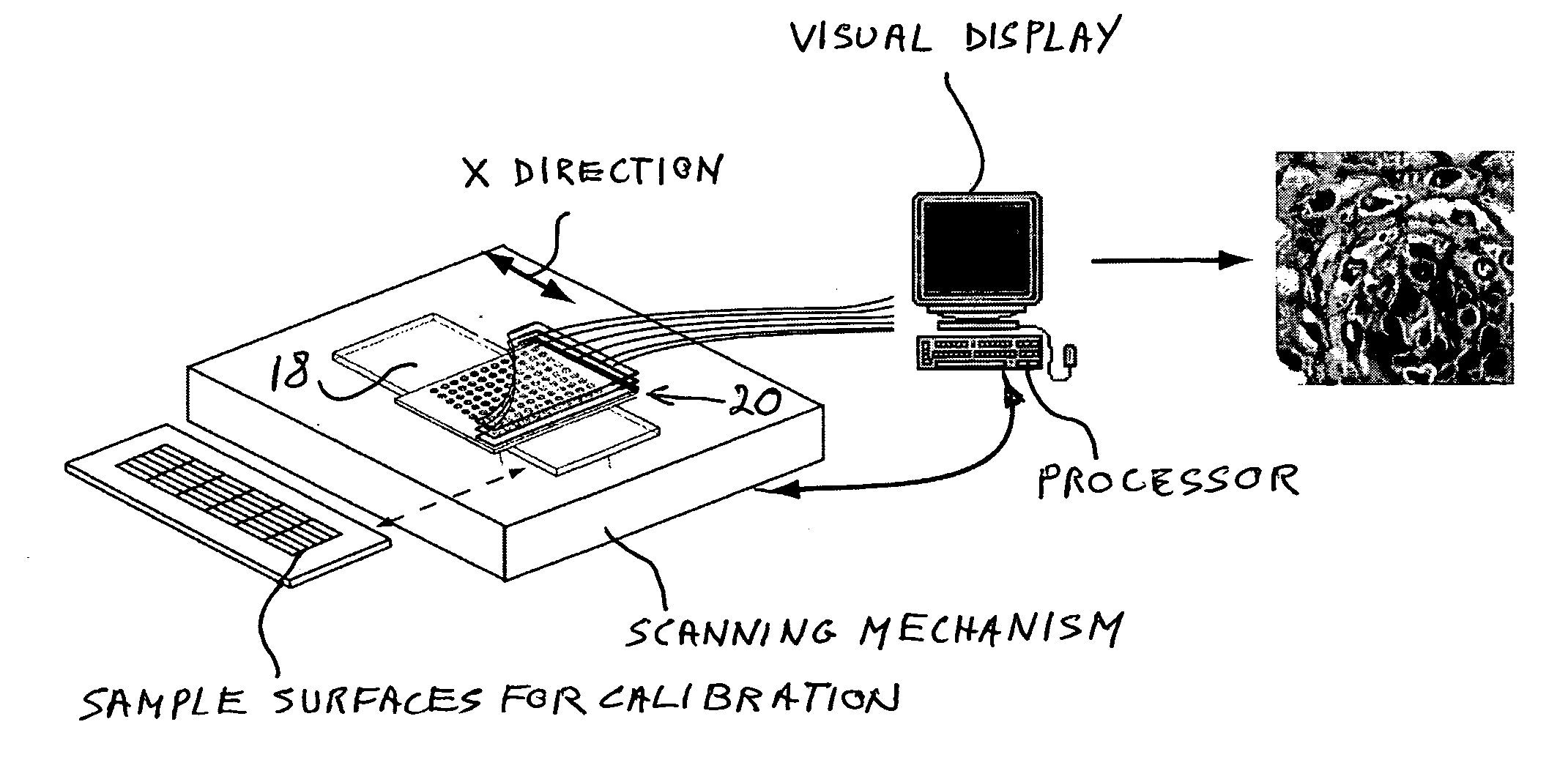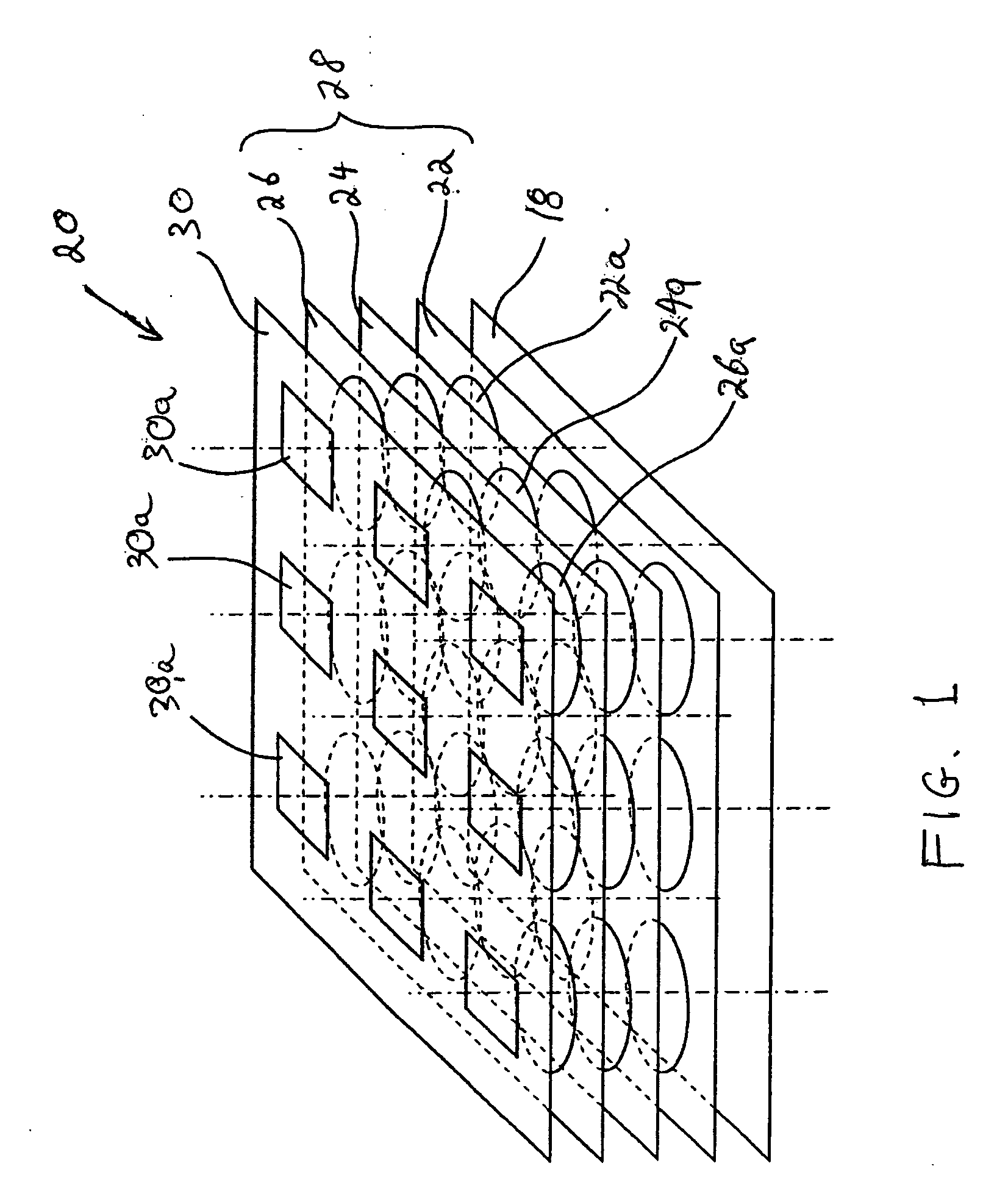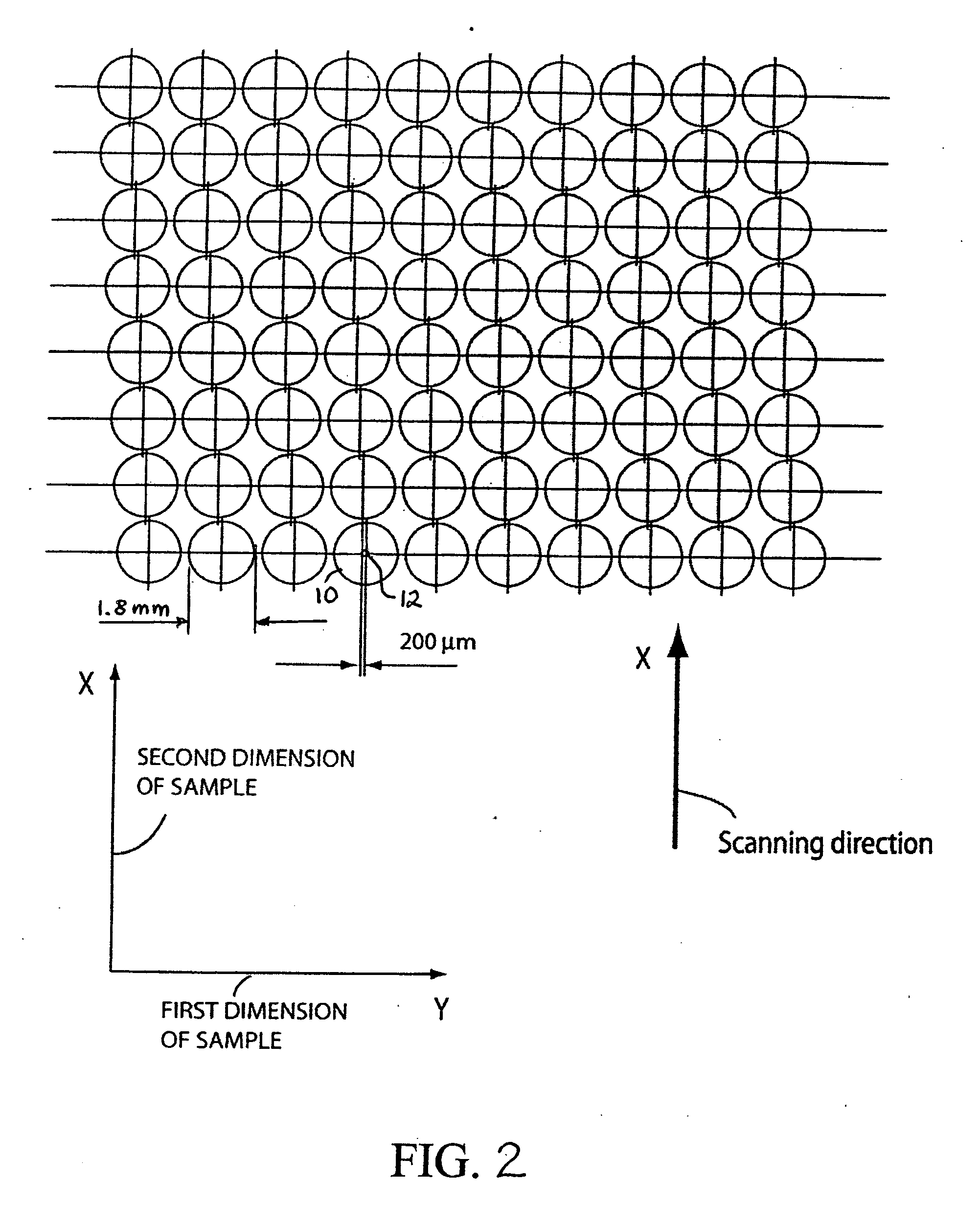Large-area imaging by concatenation with array microscope
- Summary
- Abstract
- Description
- Claims
- Application Information
AI Technical Summary
Benefits of technology
Problems solved by technology
Method used
Image
Examples
Embodiment Construction
[0036] The invention was motivated by the realization that the images produced by data acquisition using an array microscope cannot be combined directly to produce a uniform composite image because of the unavoidable data incompatibilities produced by discrepancies in the optical properties of the various miniaturized microscopes in the array. The heart of the invention lies in the idea of normalizing such optical properties to a common basis, so that functionally the array of microscopes performs, can be viewed, and can be treated as a single optical device of uniform characteristics. As a result, each set of multiple images produced simultaneously at each scanning step can be viewed and treated as a single image that can be aligned and combined in conventional manner with other sets in a single operation to produce the composite image of a large area. The advantages of the invention are particularly useful when the array microscope is utilized with linear scanning and image swaths...
PUM
 Login to View More
Login to View More Abstract
Description
Claims
Application Information
 Login to View More
Login to View More - R&D
- Intellectual Property
- Life Sciences
- Materials
- Tech Scout
- Unparalleled Data Quality
- Higher Quality Content
- 60% Fewer Hallucinations
Browse by: Latest US Patents, China's latest patents, Technical Efficacy Thesaurus, Application Domain, Technology Topic, Popular Technical Reports.
© 2025 PatSnap. All rights reserved.Legal|Privacy policy|Modern Slavery Act Transparency Statement|Sitemap|About US| Contact US: help@patsnap.com



